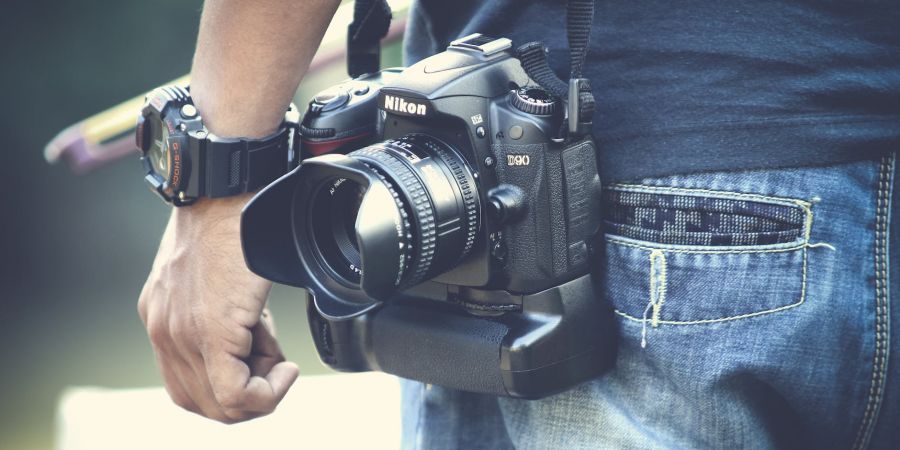

A camera is an optical instrument that captures images. Most cameras can capture 2D images, while some more advanced models can capture 3D images. At a basic level, most cameras consist of a sealed box (the camera body), with a small hole (the aperture) that allows light to pass through and capture an image on a light-sensitive surface (usually a digital sensor or photographic film). Cameras have various mechanisms to control how light falls onto the light-sensitive surface, including lenses that focus the light and a shutter that determines the amount of time the photosensitive surface is exposed to the light.The still image camera is a key instrument in the art of photography. Captured images may be reproduced later through processes such as digital imaging or photographic printing. Similar artistic fields in the moving-image camera domain include film, videography, and cinematography. The word camera comes from camera obscura, which is Latin for "dark chamber" and refers to the original device used to project a 2D image onto a flat surface. The modern photographic camera evolved from the camera obscura. The first permanent photograph was made in 1825 by Joseph Nicéphore Niépce.In photography, the single-lens reflex camera (SLR) is provided with a mirror to redirect light from the lens to the viewfinder prior to releasing the shutter for composing and focusing an image. When the shutter is released, the mirror swings up and away, allowing the exposure of the photographic medium, and instantly returns after the exposure is finished. No SLR camera before 1954 had this feature, although the mirror on some early SLR cameras was entirely operated by the force exerted on the shutter release and only returned when the finger pressure was released.The Asahiflex II, released by Japanese company Asahi (Pentax) in 1954, was the world's first SLR camera with an instant return mirror. In the single-lens reflex camera, the photographer sees the scene through the camera lens. This avoids the problem of parallax which occurs when the viewfinder or viewing lens is separated from the taking lens. Single-lens reflex cameras have been made in several formats including sheet film 5x7" and 4x5", roll film 220/120 taking 8,10, 12, or 16 photographs on a 120 roll, and twice that number of a 220 film. These correspond to 6x9, 6x7, 6x6, and 6x4.5 respectively (all dimensions in cm). Notable manufacturers of large format and roll film SLR cameras include Bronica, Graflex, Hasselblad, Seagull, Mamiya and Pentax. However, the most common format of SLR cameras has been 35 mm and subsequently the migration to digital SLR cameras, using almost identical sized bodies and sometimes using the same lens systems. Almost all SLR cameras use a front-surfaced mirror in the optical path to direct the light from the lens via a viewing screen and pentaprism to the eyepiece. At the time of exposure, the mirror is flipped up out of the light path before the shutter opens.
